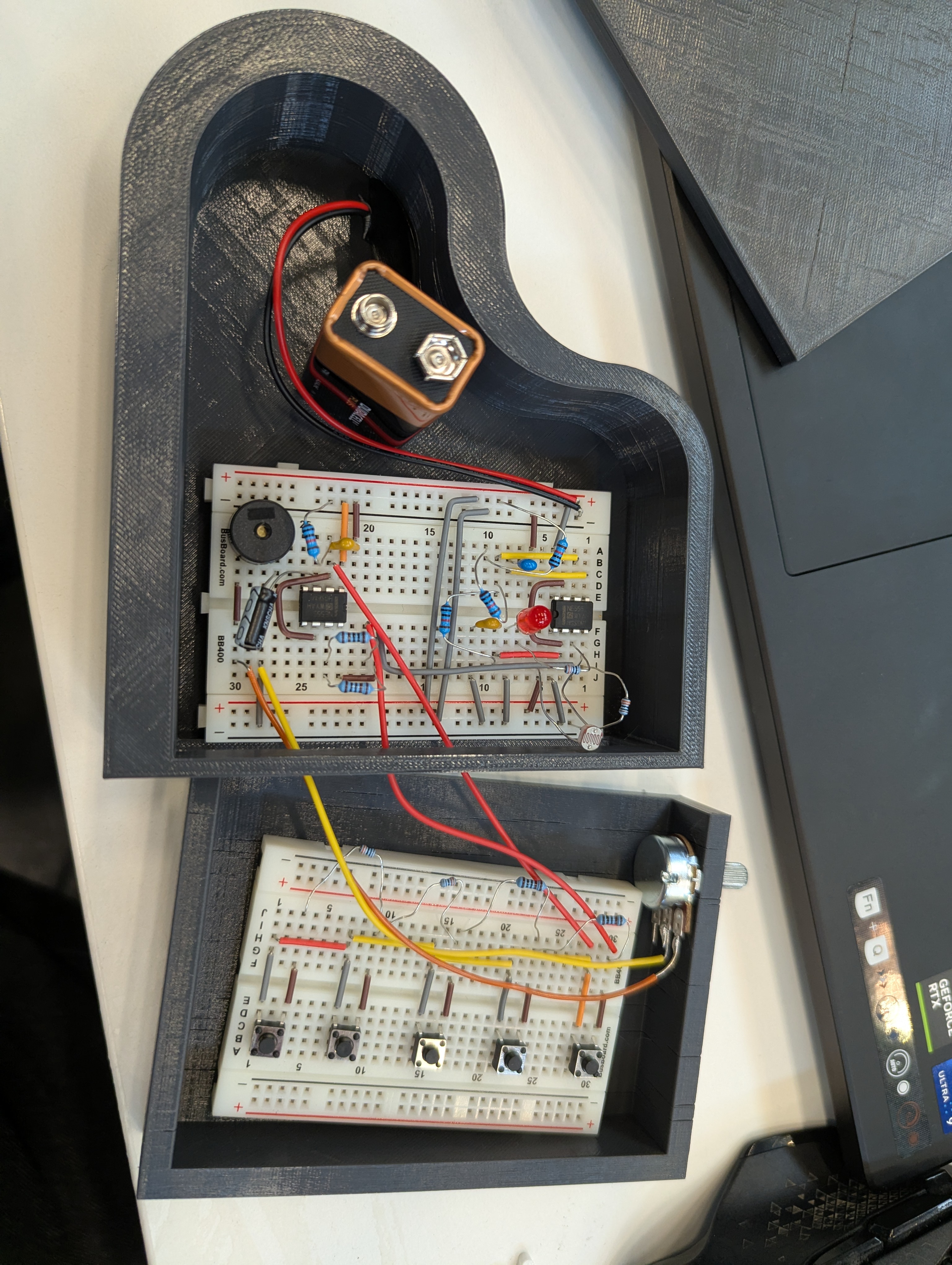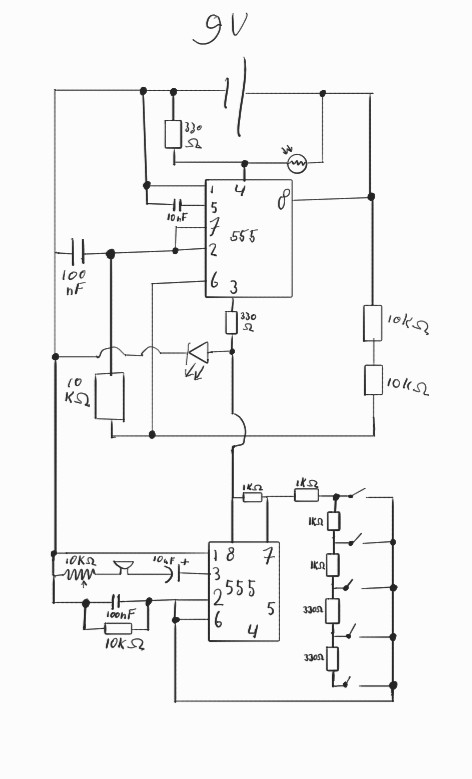For the final assignment of the first CreaTe module, I participated in a hackathon themed Sense, Process, Act (SPA).
The goal was to design and build a circuit that included both a sensor, an actuator and an NE555.
Together with my team, I developed a small electronic piano that generates different tones using two NE555 timer ICs, a couple buttonsm, a buzzer and a photoresistor.

System Design
The first NE555 timer was configured in monostablemode and connected to a photoresistor (LDR).
The LDR’s resistance changes with light intensity, which determined whether the second 555 oscillator was enabled.
This stage acted as a light-controlled swigtch, allowing the piano to function only if the lid was opened.
The second NE555 operated in astable mode to produce oscillating square waves.
Multiple buttons were connected in series with different resistor values.
Pressing a button inserted a specific resistance into the timer chip.
Since the 555’s frequency is dependant on the resistance of the circuit,
changing the resistance directly changed the oscillation frequency.
This allowed each button to generate a unique tone.
The output signal from the astable 555 was fed into a passive piezo buzzer.
The buzzer converted the square-wave frequencies into audible sound.

Result
The final circuit successfully demonstrated the SPA principle:
Sense: detecting light levels with an LDR, controlling the volume of the button with a potentionmeter, and sensing user input via the keys.
Process: generating frequency-dependent signals using the NE555
Act: producing sound through a piezo buzzer
The project provided hands-on experience with analog electronics, timing circuits, and sensor-driven interaction. And was a fun challenge!